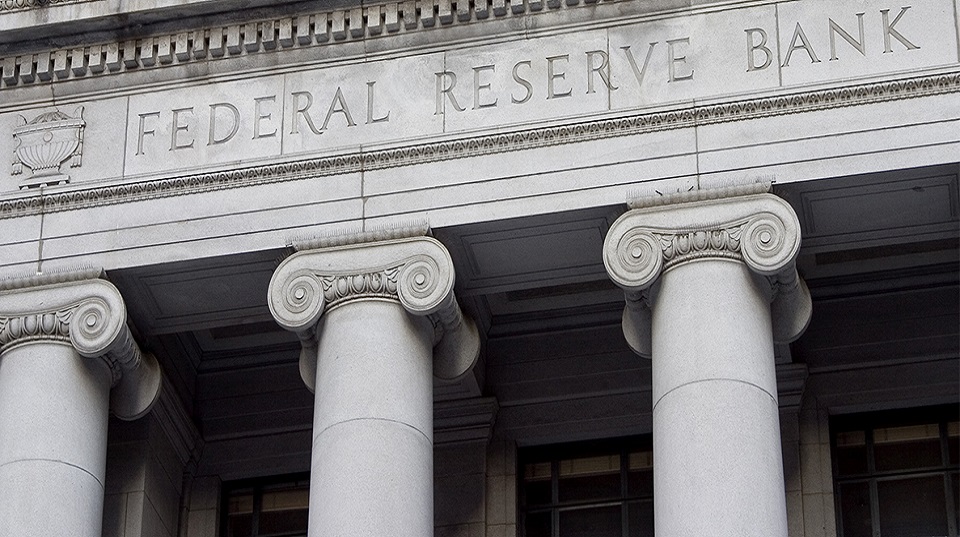by Liz Ann Sonders, Senior Vice President, Chief Investment Strategist, Charles Schwab & Co
Key Points
- The Fed kept rates pinned to zero, while putting a floor under its monthly purchases of Treasuries and mortgage-backed securities.
- Economic projections from the FOMC were updated; and a sharp rebound in GDP growth is expected in 2021 after a dismal 2020.
- Jerome Powell emphasized that the Fed’s emergency tools will eventually have to be put “back in the toolbox.”
As expected, the Federal Reserve kept rates unchanged at 0-0.25% and said it will keep them near zero through at least 2022, in a unanimous vote. On the economy, the Fed expects real gross domestic product (GDP) to fall 6.5% in 2020; rebounding to a 5% increase in 2021, as the economy recovers from the COVID-19 pandemic. A recession was officially declared—by the official arbiters of recessions, the National Bureau of Economic Research (NBER)—as starting in February.
Fed puts floor under asset purchases
The Federal Open Market Committee (FOMC) statement repeated the commitment from the April meeting that it “expects to maintain this target range until it is confident that the economy has weathered recent events and is on track to achieve its maximum employment and price stability goals. Key in the statement with regard to asset purchases: “To support the flow of credit to households and businesses, over coming months the Federal Reserve will increase its holdings of Treasury securities and agency residential and commercial mortgage-backed securities at least at the current pace to sustain smooth market functioning, thereby fostering effective transmission of monetary policy to broader financial conditions.”
An accompanying statement from the Federal Reserve Bank of New York said the pace of the increase in purchases would be at least $80 billion per month of Treasuries and $40 billion per month of mortgage-backed securities. Bond purchases were a major focus heading into today’s meeting given the Fed had scaled back its purchases sharply from the peak of $350 billion per month of Treasury purchases.
New projections
The aforementioned projection of GDP this year and next were components of the FOMC’s updated summary of economic projections, detailed below. These were updated for the first time since last December, after the Fed’s March meeting was cancelled amid the pandemic (and in light of the two emergency rate cuts earlier that month). All voting members of the FOMC expect the federal funds rate to remain near zero through the end of 2021; with all but two expecting them to stay there through 2022.
Source: Charles Schwab, Federal Reserve, as of 6/10/2020. Note: Projections of change in real gross domestic product (GDP) and projections for both measures of inflation are percent changes from the fourth quarter of the previous year to the fourth quarter of the year indicated. PCE inflation and core PCE inflation are the percentage rates of change in, respectively, the price index for personal consumption expenditures (PCE) and the price index for PCE excluding food and energy. Projections for the unemployment rate are for the average civilian unemployment rate in the fourth quarter of the year indicated. Each participant’s projections are based on his or her assessment of appropriate monetary policy. Longer-run projections represent each participant’s assessment of the rate to which each variable would be expected to converge under appropriate monetary policy and in the absence of further shocks to the economy. The projections for the federal funds rate are the value of the midpoint of the projected appropriate target range for the federal funds rate or the projected appropriate target level for the federal funds rate at the end of the specified calendar year or over the longer run. 1For each period, the median is the middle projection when the projections are arranged from lowest to highest. When the number of projections is even, the median is the average of the two middle projections. 2Longer-run projections for core PCE inflation are not collected.
“Unbalanced nature” of recession
In the FOMC statement there was no acknowledgement of recent better-than-expected economic data. In fact, Fed Chair Jerome Powell, at the start of his press conference, was quick to highlight the acknowledgement by the Bureau of Labor Statistics that due to “misclassification error,” the true unemployment rate would be 16.3%—much higher than the 13.3% reported. Powell also quickly cited the “unbalanced nature” of the recession, highlighting epic joblessness among low-wage workers, women, African Americans and Hispanic Americans. Embedded in the economic projections about was a wide range of expectations for the unemployment rate: the low projection was 7% by the end of 2020; while the high projection was 14% (which means one member expects the unemployment rate to be higher at the end of this year as it is now).
Although there was some speculation heading into today’s meeting, there was no announcement of explicit yield control targets further out on the Treasury maturity curve. With yields remaining low, the Fed may have felt limited pressure to act. As a reminder, yield control is a prospective policy intended to prevent the sudden spike in yields that occurred during 2013’s “taper tantrum.”
Fed’s tool box
Stocks initially rallied on the Fed’s announcement, but were giving back those gains as we put this report to bed. Many investors continue to be flummoxed at the stock market’s strong rally since late-March in the face of dismal economic conditions. As we’ve been highlighting, Fed-provided liquidity has been a powerful elixir for stocks; but its emergency measures will eventually have to be pared. Powell emphasized the sudden implosion in GDP and the current debate around the shape and speed of the economic recovery. He also made it clear that once the crisis has passed, the Fed “will put these emergency tools back in the tool box.”
















